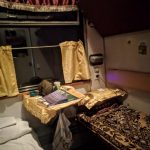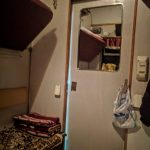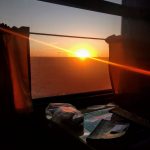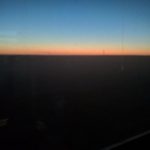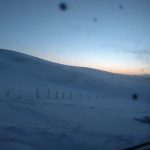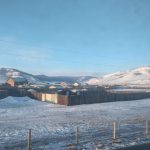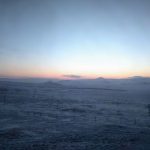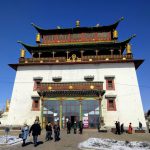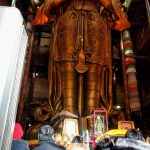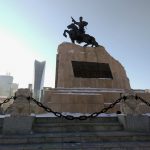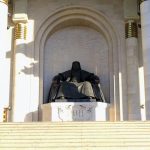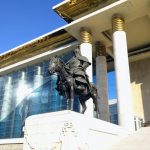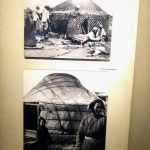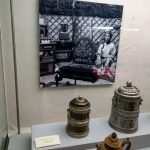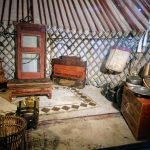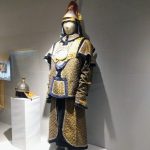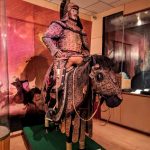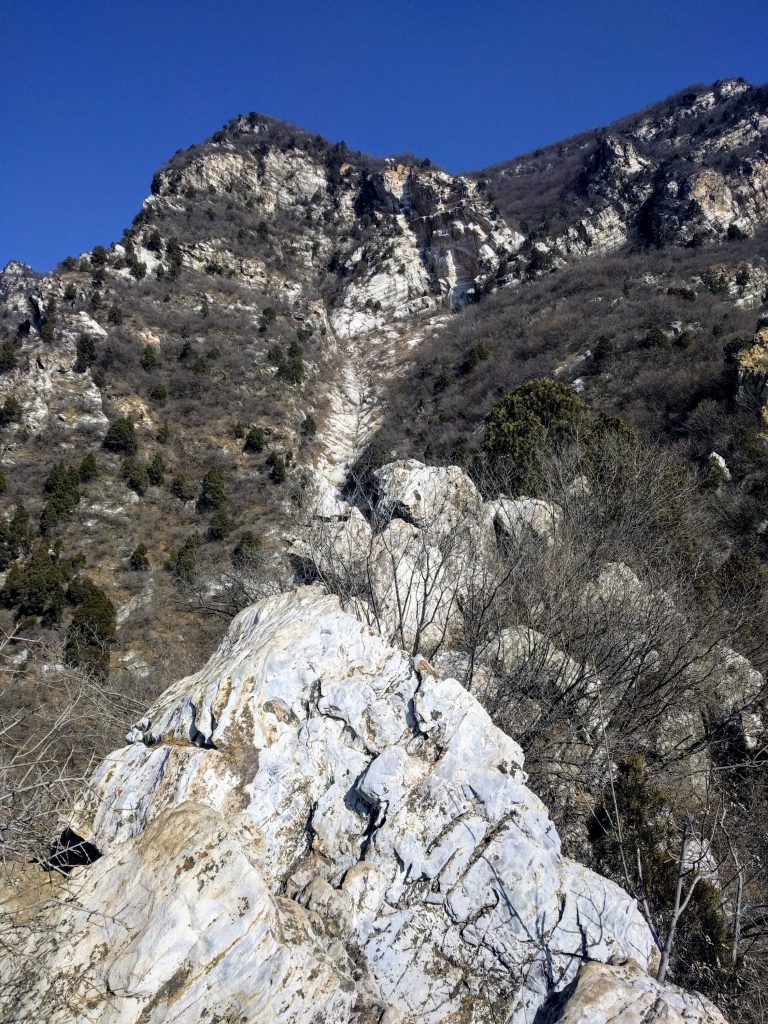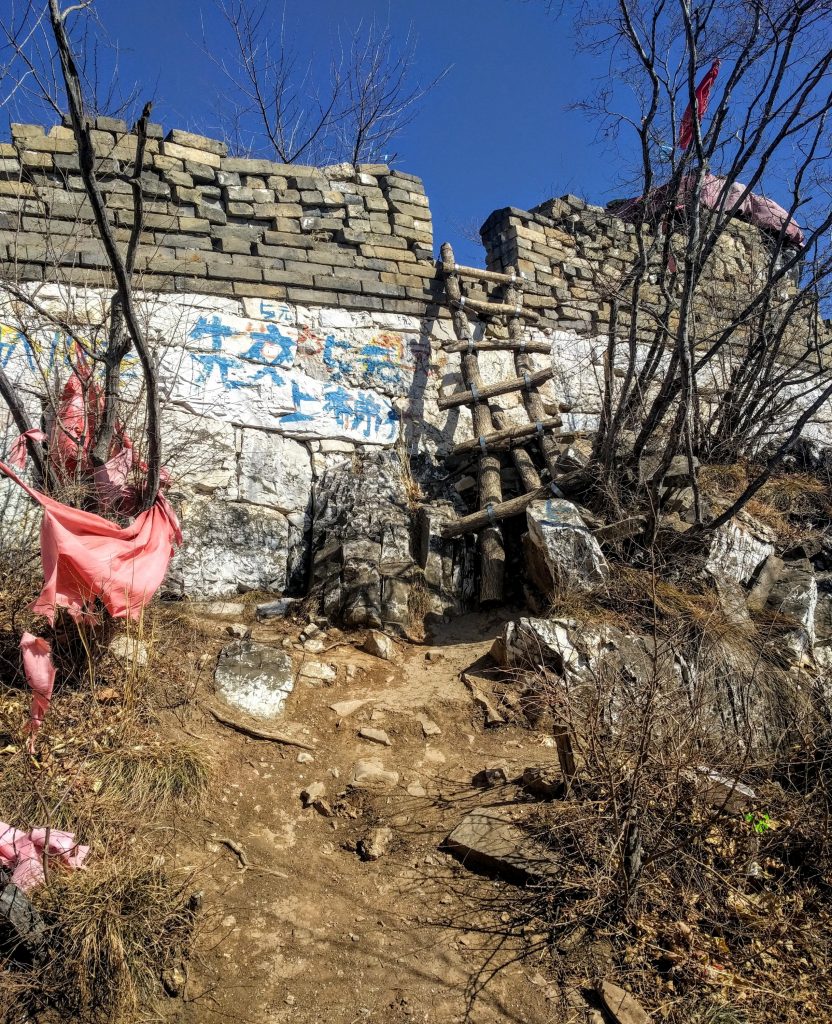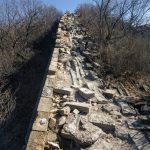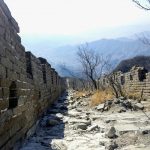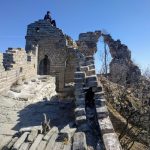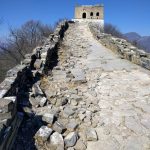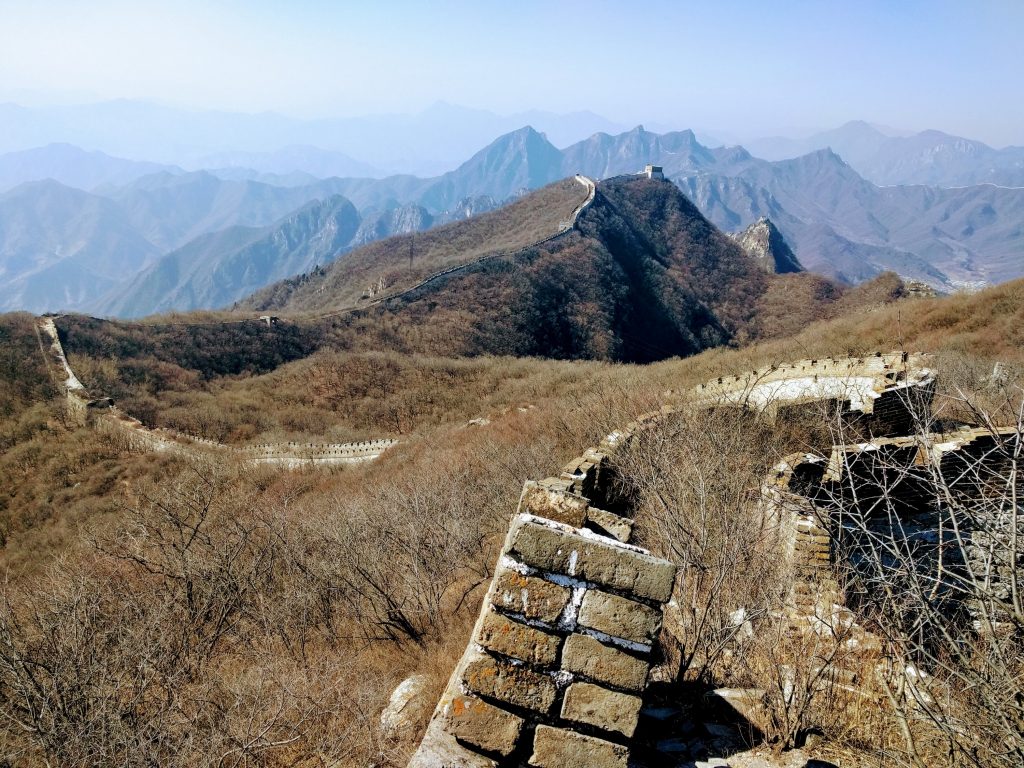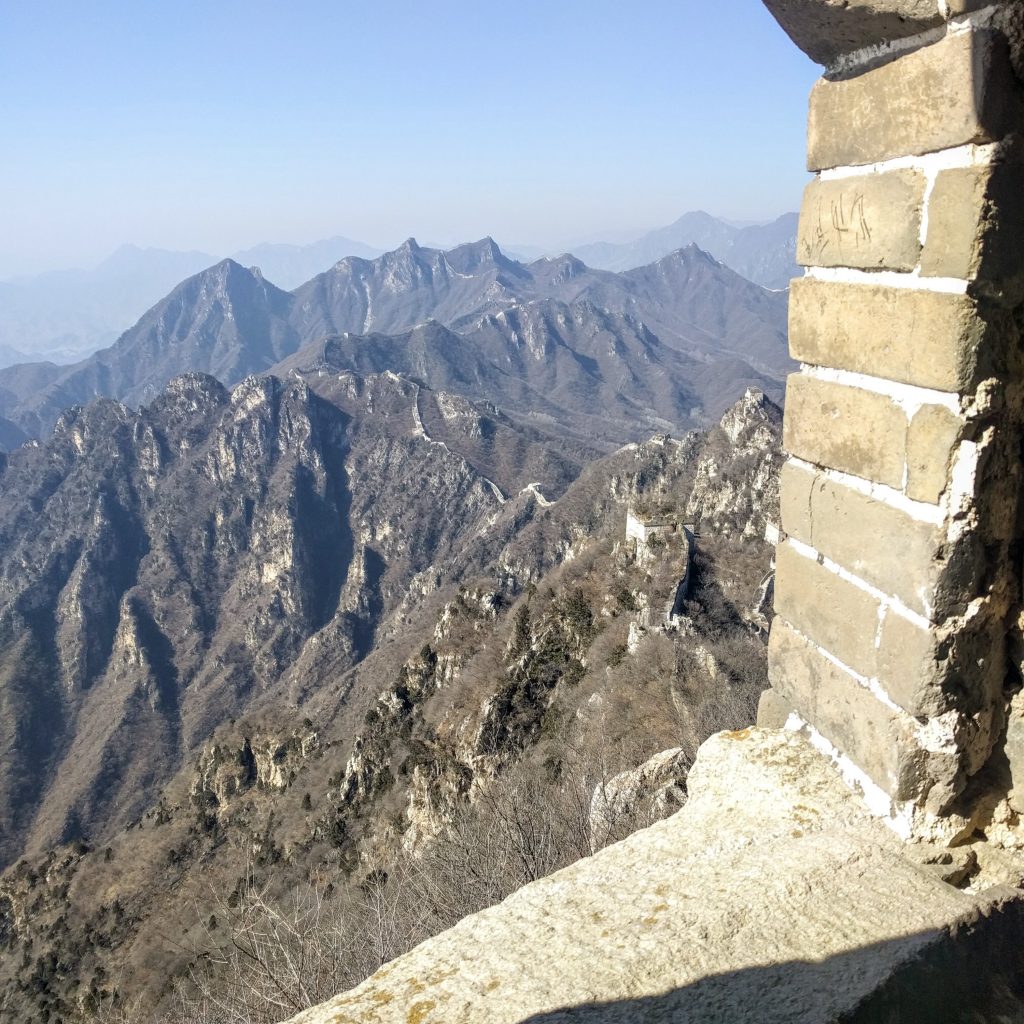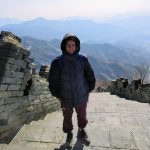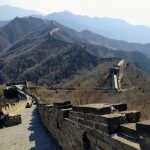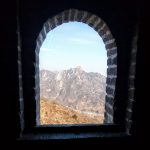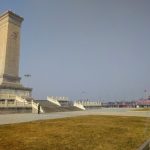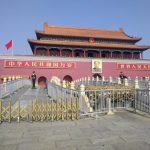After two not so fun Chinese commuter trains I made it to the border town. In the border town I got out off the train to a notable weather change. It’s starting to get pretty chilly as I move north! In the border town I started to notice some changes. It wasn’t like the typical Chinese towns I had seen. It seemed more Russian… There was Russian writing under the Chinese on the sign as well.
As I walked through the town I finally made it to the bus station and got my phone charged and used the suprising fast wifi there. After a couple hour wait my border bus was ready to depart. I got on the bus with some Chinese and likely Mongolian people and we headed for the border. We got to the Chinese border and got out of the bus to proceed with the exit paperwork. A Chinese soldier seemed really curious to see a foreignor at the land border crossing since they probably don’t get many. He asked to see my passport and spent time turning through each page of my passport. Often when I see officials do this they seem very procedural, but he had a glimmer of genuine intrigue and interest in the places I have been. He smiled at me and said, “American!” as he handed me back my passport.
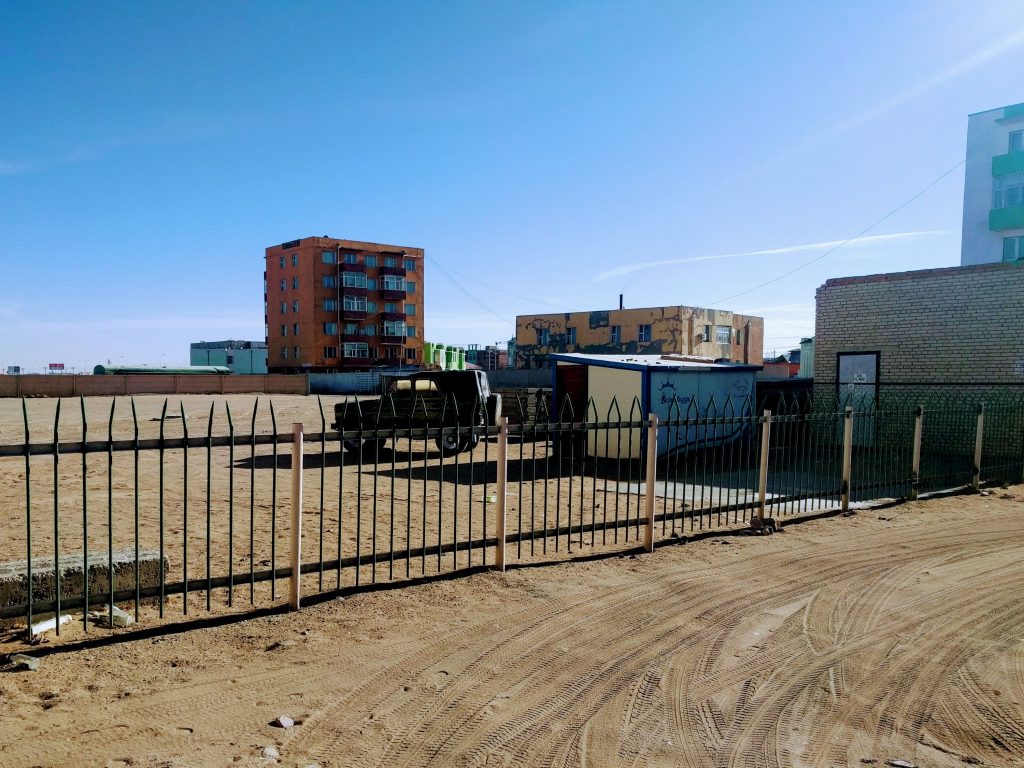
Back onto the bus and then a stop at the Mongolian entry point. More paperwork and more waiting. Then onto the bus one last time and then we we’re shuttled to the center of the Mongolian border town. In all it took probably 2 hours to get through.
Immediately, I started to notice some things about this Mongolian border town. It wasn’t at all like I expected. It seemed more Russian then Asian, and really it wasn’t much of a town. Historically, the Mongols are a nomadic people. Town and city building isn’t really their thing and it shows. Most of the buildings here are left over from the Soviet occupation it seems. Mongolia was a Soviet satalite state from 1924-1990. During that time Russia pumped in money and built hospitals, schools, theaters, and a lot of public services that were previously foreign to the Mongolian people.
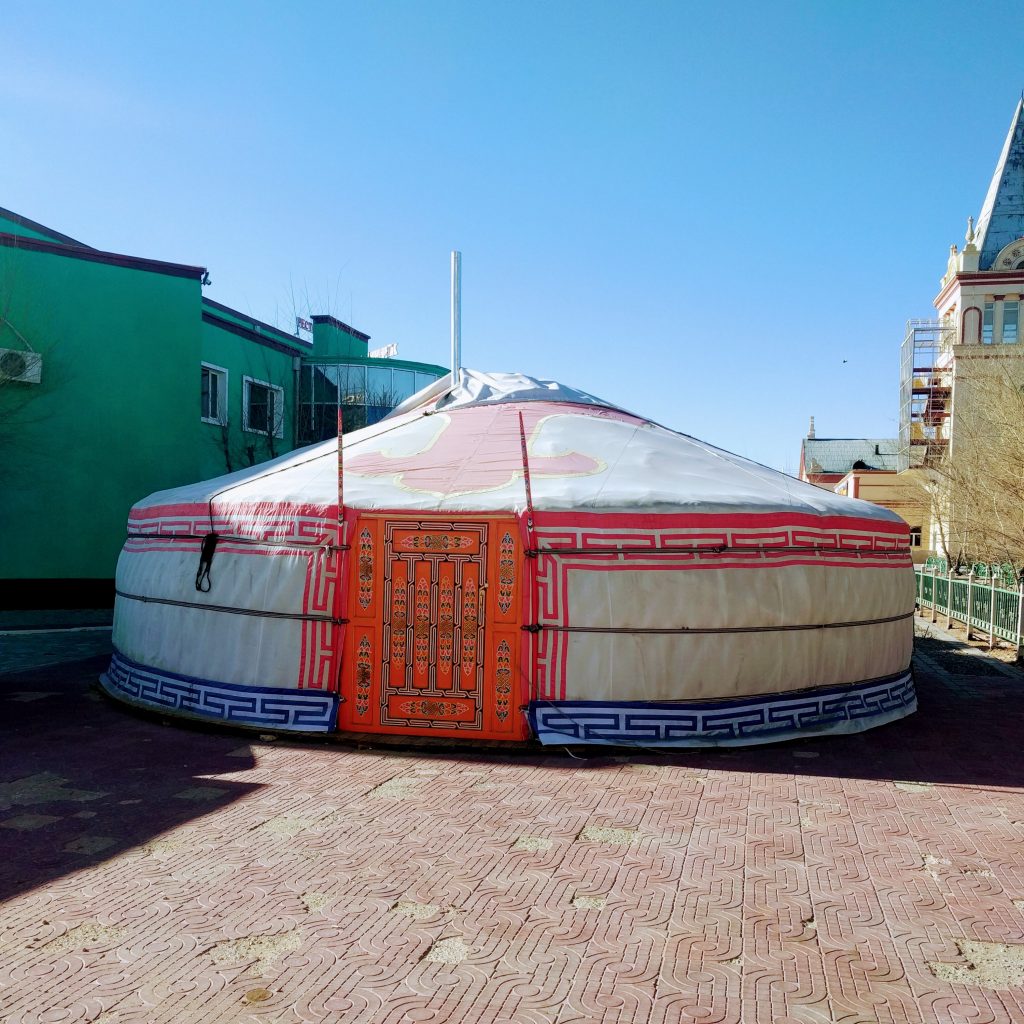
Even today 30% of the countries population maintains a nomadic lifestyle. That is one of the reasons Mongolia is unlike any country I have ever visited. The picture above is a “ger.” Gers are homes made easily transportable for when the nomadic people move to a different pastures. It’s said there are 10 sheep for every person in Mongolia. This nomadic culture and reliance on horsemanship is apparent in most respects when observing the country.
 There is a huge respect for the great Genghis Kahn and his likeness appear everywhere from posters to cigarette and vodka brands.
There is a huge respect for the great Genghis Kahn and his likeness appear everywhere from posters to cigarette and vodka brands.
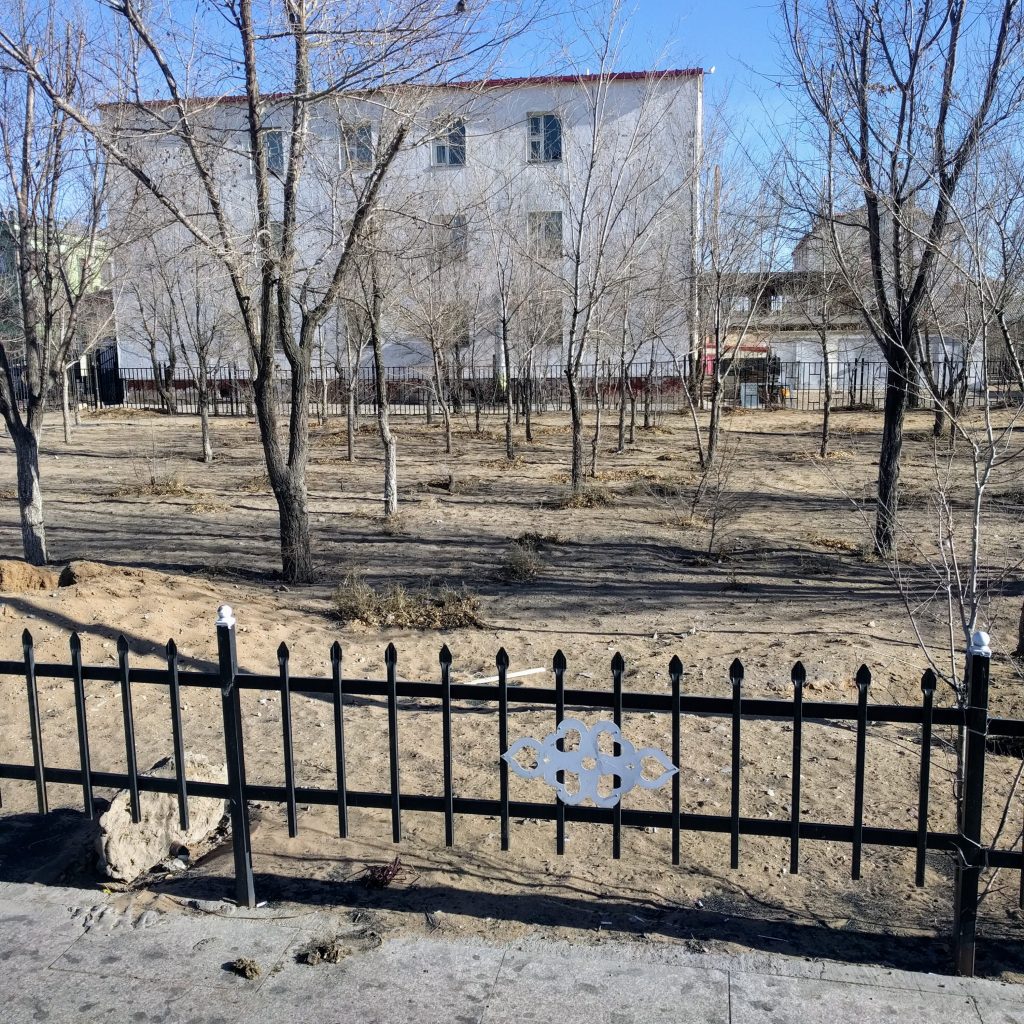
I said the border town initially made me think of Russia and Soviet times, and that isn’t helped by the dilapidated look of the public park. Then picture makes it look like a depraved town during the dust bowl, but these are the realities when towns flirt close with the Gobi desert. The majority of the country’s land isn’t arable, but is a grassy steppe. This is one of the larger reasons why the nomadic lifestyle still prevails.
The train station in this border town looked like it was built by the Russians probably in the 50s and then closed when the Soviet Union dissolved in 1991. However, in fact, it was still open. It was ornate, almost like a church. You could tell it it’s hay day it would have seemed extravagant, right on par with the the image of Trans Siberian Railroad when it first opened. By looking at the building, however, one would ha guessed it hadn’t been used in years. The majority of the doors were barred shut and you actually had to go to another building, a more modern one, to buy tickets. Stepping into the old station revealed a waiting room and a luggage room and not much else. Walking into the waiting room was like stepping into a time capsule. There was a cigar lounge and and a bar. It was the type of bar you could imagine Western travelers enjoying a scotch at during one of there stops along their Trans Siberian journey.
The train itself was like something straight out of the Polar Express or Harry Potter. While, the steam locomotive wasn’t quite on par, the cabins and the carriages carried an aura of excitement for the coming journey. I couldn’t help but grinding the whole time.
A 6pm departure got us out of town and into the vastness of the Gobi right in time for sunset. Out of the East window you could see the vast stretches of uninhabited plains. Out of the West window you got a spectacular view of the sun setting over the desert. I couldn’t have asked for a better send off on my first official leg of the Trans Siberian Railroad. Though Beijing is generally considered the start (or end) of the railroad, I could hardly consider that a proper start since this train was my first experience with a sleeper car.
I slept like a log through the night, and only awoke once when I gained two roommates at a stop along the way. I barely noticed and continued sleeping. In my 8 days in China I had only slept in a proper bed 3 times. The rest was either on a train or a bus. So to me this 2nd class sleeper car feels like luxury. I awoke in the morning to rolling hills and the desert blanketed in snow. From time to time we would pass a little settlement with a couple buildings and numerous gers.
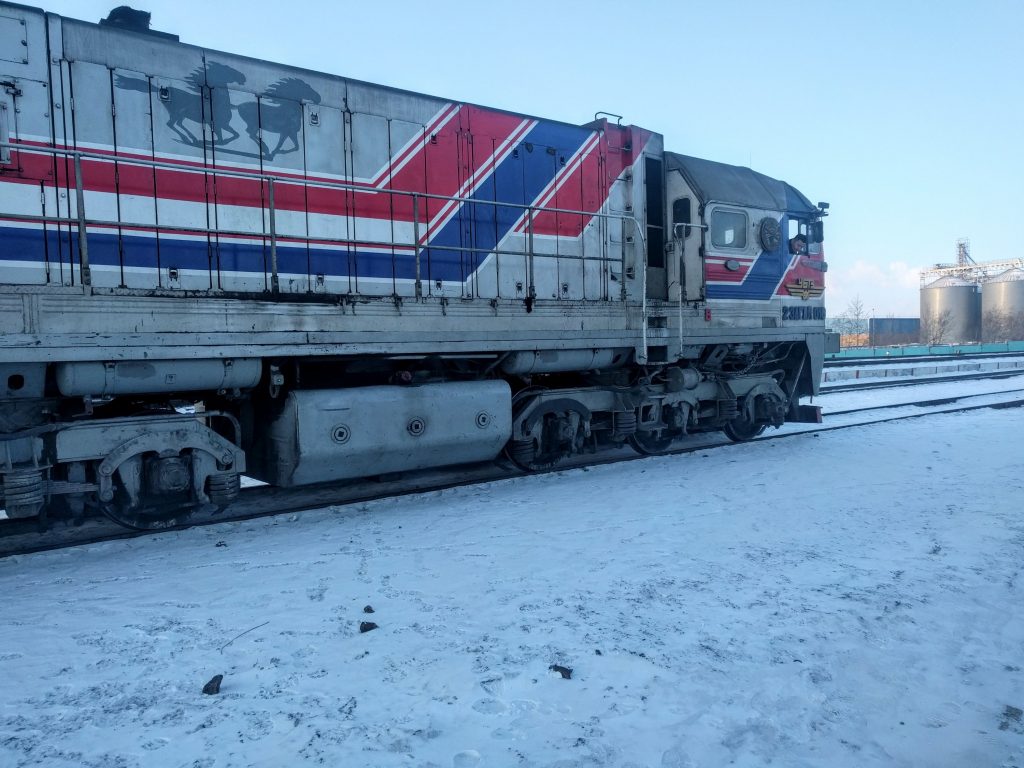
At around 9am we pulled into the station. Yet another climate shock. We are getting colder and colder as I go! The picture above shows the trusty stead that carried us through the night. Now I am in Ulan Bator! This is the cpaital.of Mongolia and by far it’s biggest city. In fact this city makes up 45% of the countries population.
I first got to a hostel and then connected to WiFi to organize my next moves. I still needed to go back to the train station in the afternoon to book my train ticket taking me to Irktusk, Russia the next day. I stepped in and made plans to go see the famous monastery in the city. Inside there was this massive shrine of some person or god. I tried to discretely snap a picture since I was the only tourist and everyone else there was performing rituals and worshipping. I failed to get the whole thing, but it was massive and quite impressive.
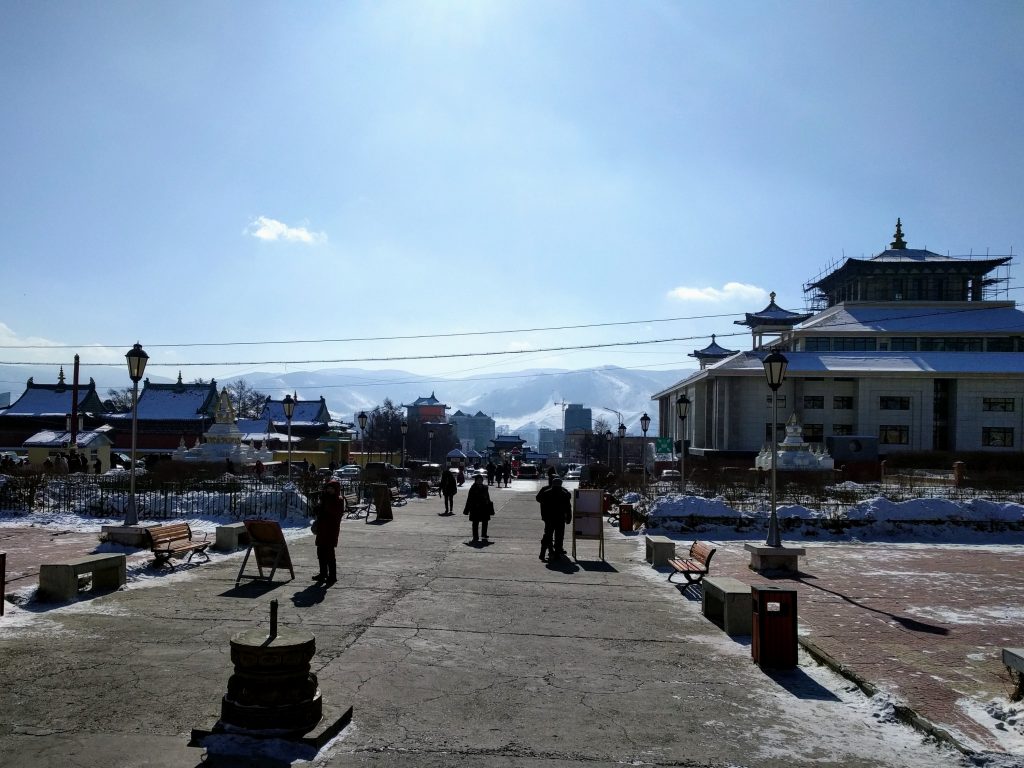
The city has some mountains out to the South and to the East there is a national park and the world’s largest equestrian statue built in Genghis Kahn’s honor. Due to my time restraints and the steep price to take a tour there I unfortunately won’t get to see Genghis in his future glory. However, that just shows the true legend status he maintains in this country. I read about how Mongols are the best horseman in the world and learned that they start so young that they actually become deformed and have a hunched over back from riding so often at such a young age. By the monastery was the first time I observed this. I saw several old men in the traditional winter coats and boots hunched over to an average height of around 5′. It was crazy to see that in person. I reckon the older generation grew up in those traditions and some of the last who will experience that deformity.
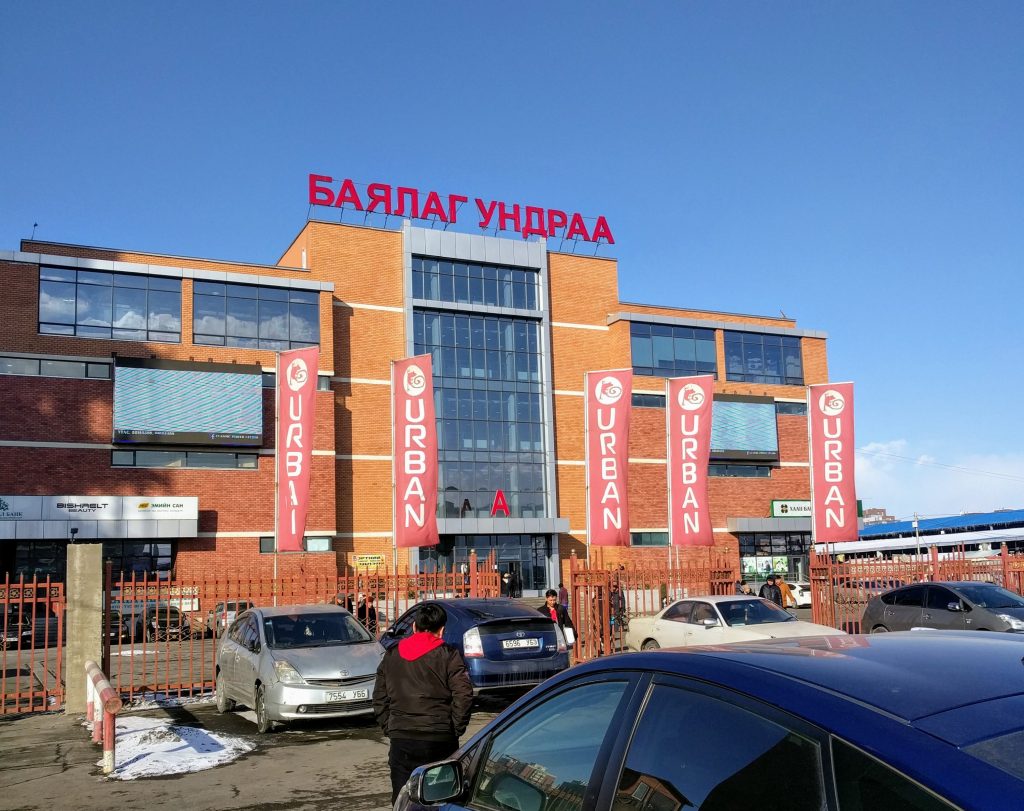
My first day in Ulan Bator was literally freezing… During the day it was 0° Fahrenheit not including the wind chill! It’s a little bit of a shock coming from the 90°s of Thailand so recently. Luckily, my hostel owner was going to the black market and invited me to go along. I’m not sure why it’s called the black market, because it’s essentially just the popular local market. You probably have to know someone to get the black market items. But my purpose was warm close. For a grand total of $26 I came away with a sheep wool sweater, camel wool socks and a hat, and yak wool gloves. Mongolia is one of the largest producers of wools products and if I was heading home I would have loaded up on the cheapest cashmere clothing I have ever seen. If you are into wool, this place would be heaven for you.
Day 2:
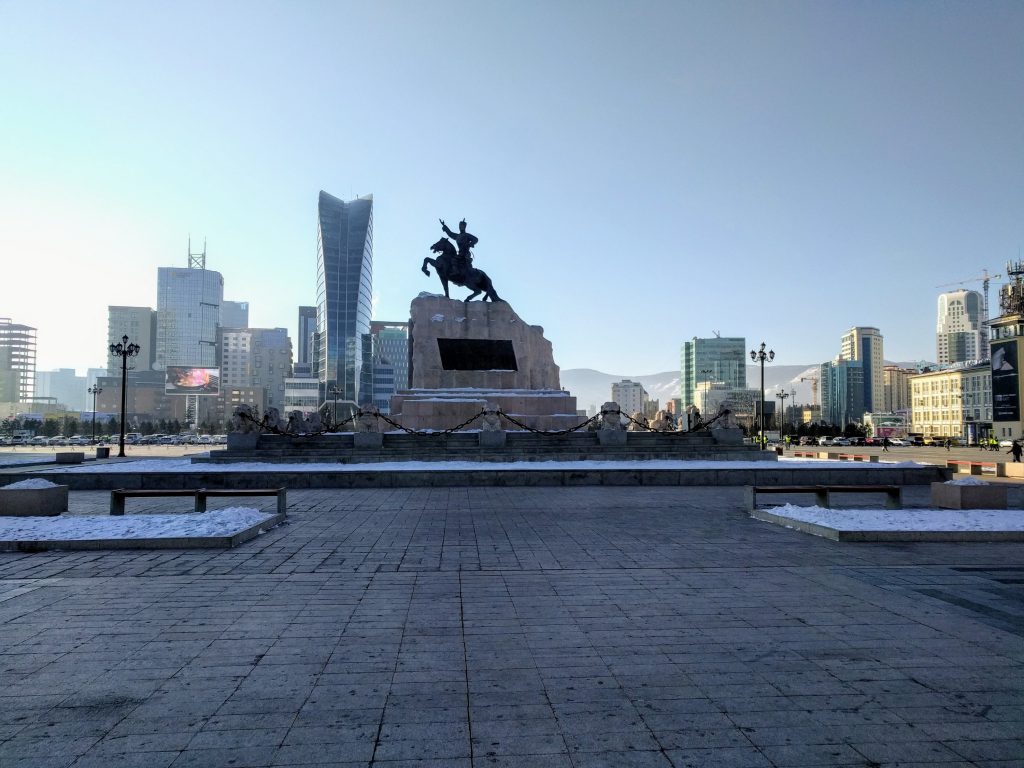
I started the day by leaving my hostel at 9am. It was -12°! I sure am glad I have all this wool gear now otherwise I’d be in trouble. I started out towards the National Museum of Mongolian History with a pit stop at the city square. The city square, once again, reinforced the cultural significance of Genghis Kahn and the nomadic lifestyle. Below you can see a sculptures of (probably) significant men on horse back and a sculpture of Genghis Kahn ruling his empire.
At the museum I got a real glimpse of the rich history of Mongolia. The one thing traveling that has struck me is how much history is in some of these civilizations compared to the United States. Mongolia has one of the richest histories of any. There were the early people who were hunter and gatherers. However, then I found it interesting to see that some early cultures of Mongols developed cities and towns. That is especially interesting considering even today 30% of the country still lives as nomads with out permanent cities or town.
I got a better understanding of gers and how the nomadic people thrived in them. Then looking at the political history it was awesome to follow the rise of Genghis Kahn forming the largest empire in the history of the world. The Mongols essentially controlled all of Asia and as far as Italy in Europe with Poland and Hungary in it’s reigns. Genghis’s grandchildren even started a new dynasty in China.
Somewhere in there the Huns come out of the mongols and they have a rich history as well. More recently Mongolia was the second ever communist country and then recently in the 90s transitioned to a free market economy. So much history!
The owner of my hostel talked about how Mongolia was a special country and used the metaphor of the world being a body. “If the world were a body,” he said. “Mongolia would be the brain.” Not entirely sure what he meant by that, but he talked about how the land is so pure from the way people have used it for centuries. He talked about the pureness and how spirits rest everywhere in the country unlike most other places. From what I gathered that was supposed to be a good thing. Nonetheless, though I didn’t spend a much time here as I would have liked, Mongolia is one of my favorite and definitely one of the most interesting countries I have visited.
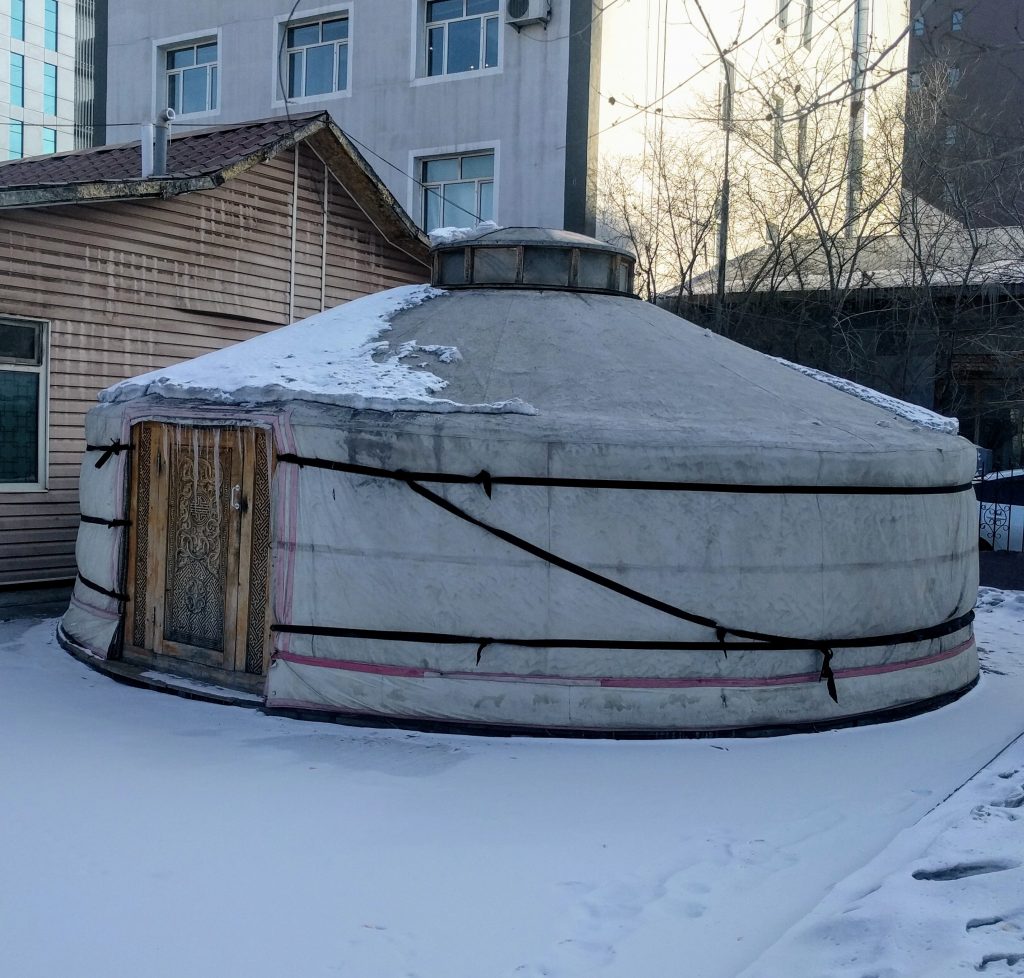
To put it simply, Mongolia is special. I look forward to returning for some more adventures some day! However, the journey home leads through Russia. Now, to start the train journey through Siberia.
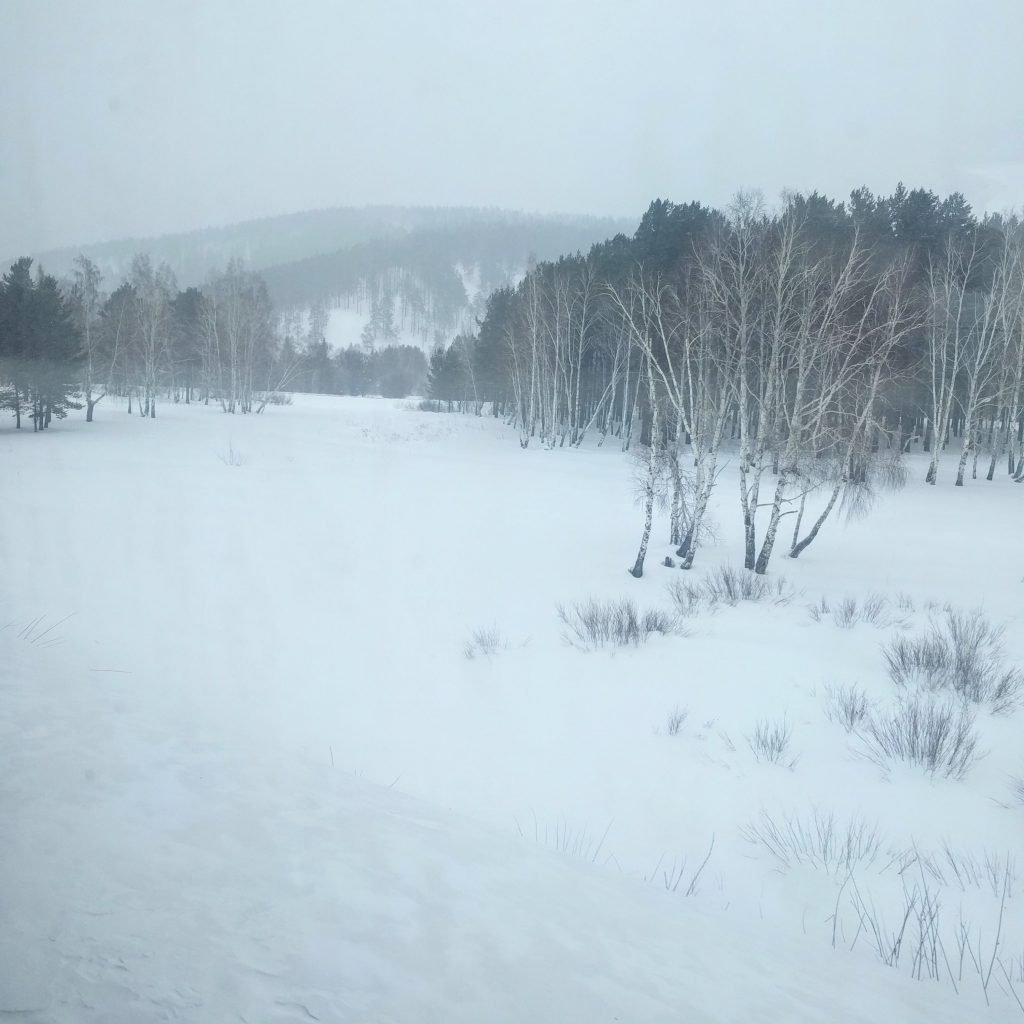
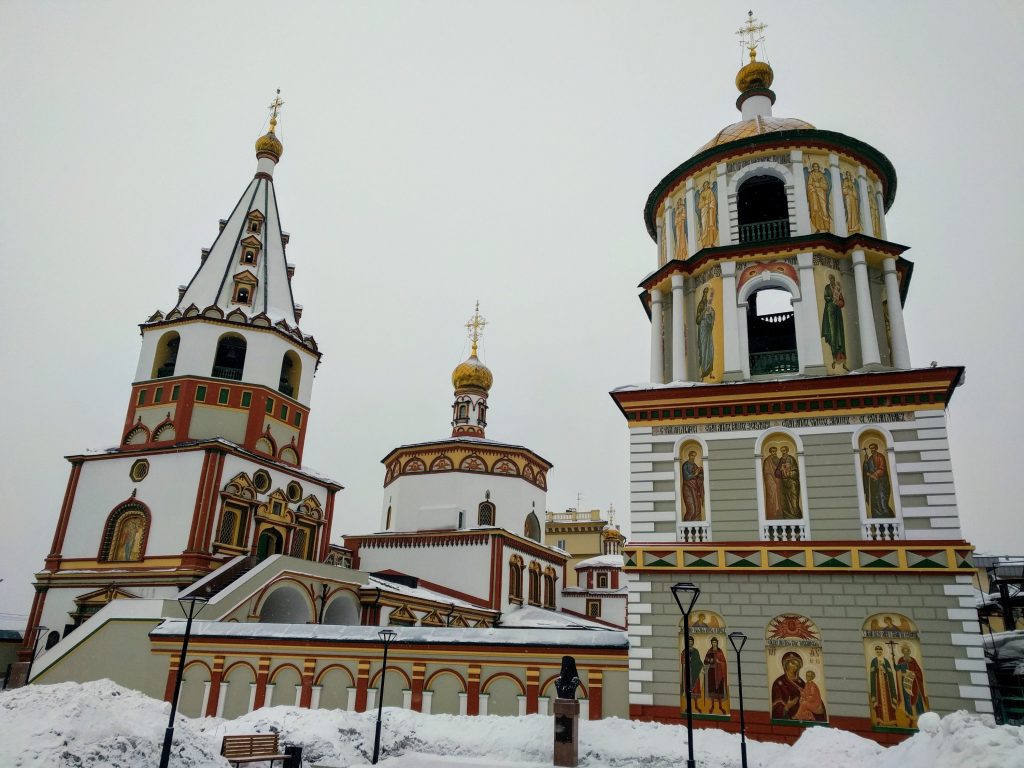


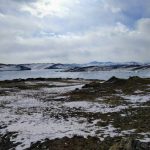
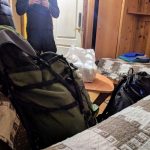


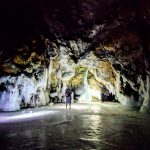

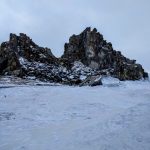

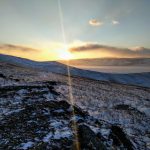


 There is a huge respect for the great Genghis Kahn and his likeness appear everywhere from posters to cigarette and vodka brands.
There is a huge respect for the great Genghis Kahn and his likeness appear everywhere from posters to cigarette and vodka brands.
